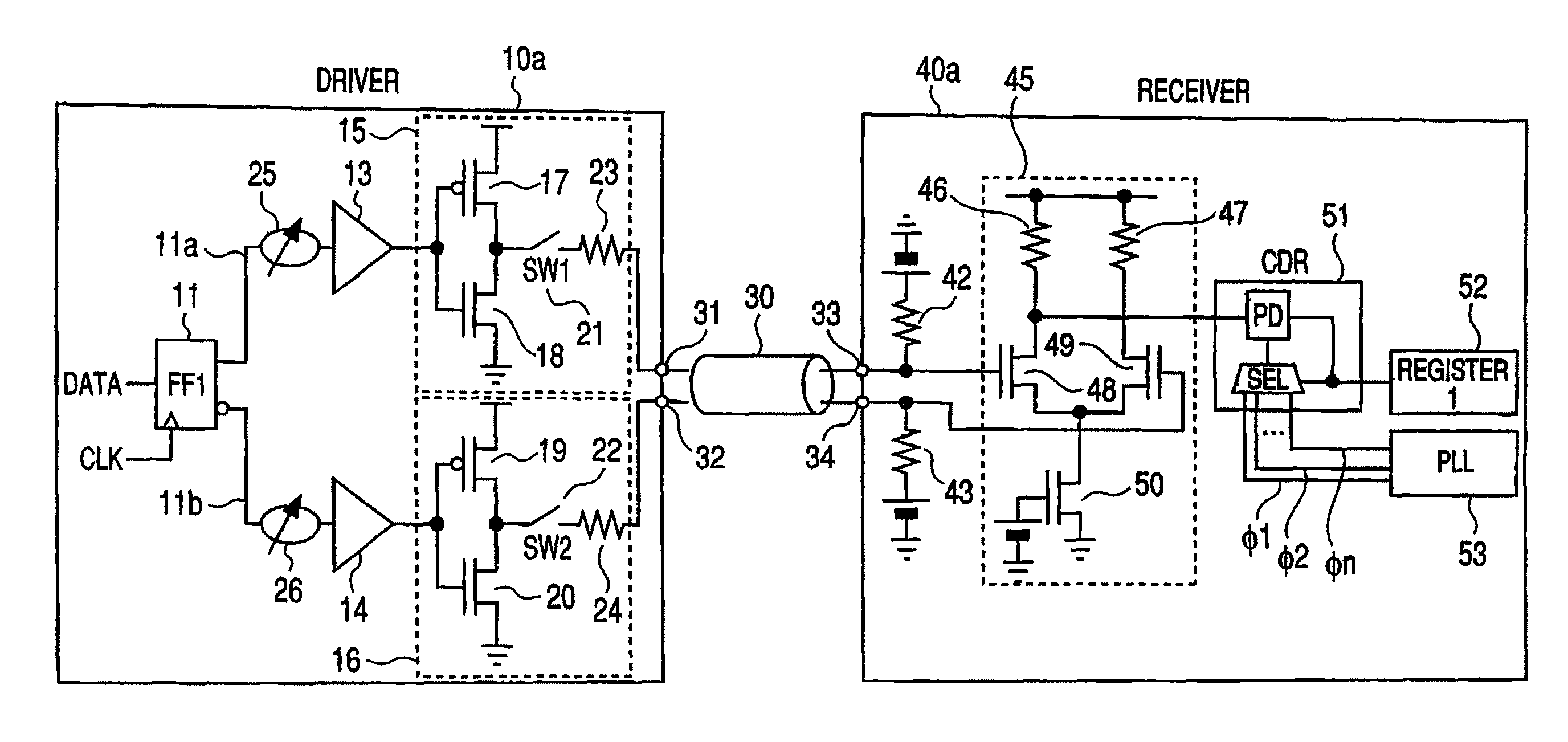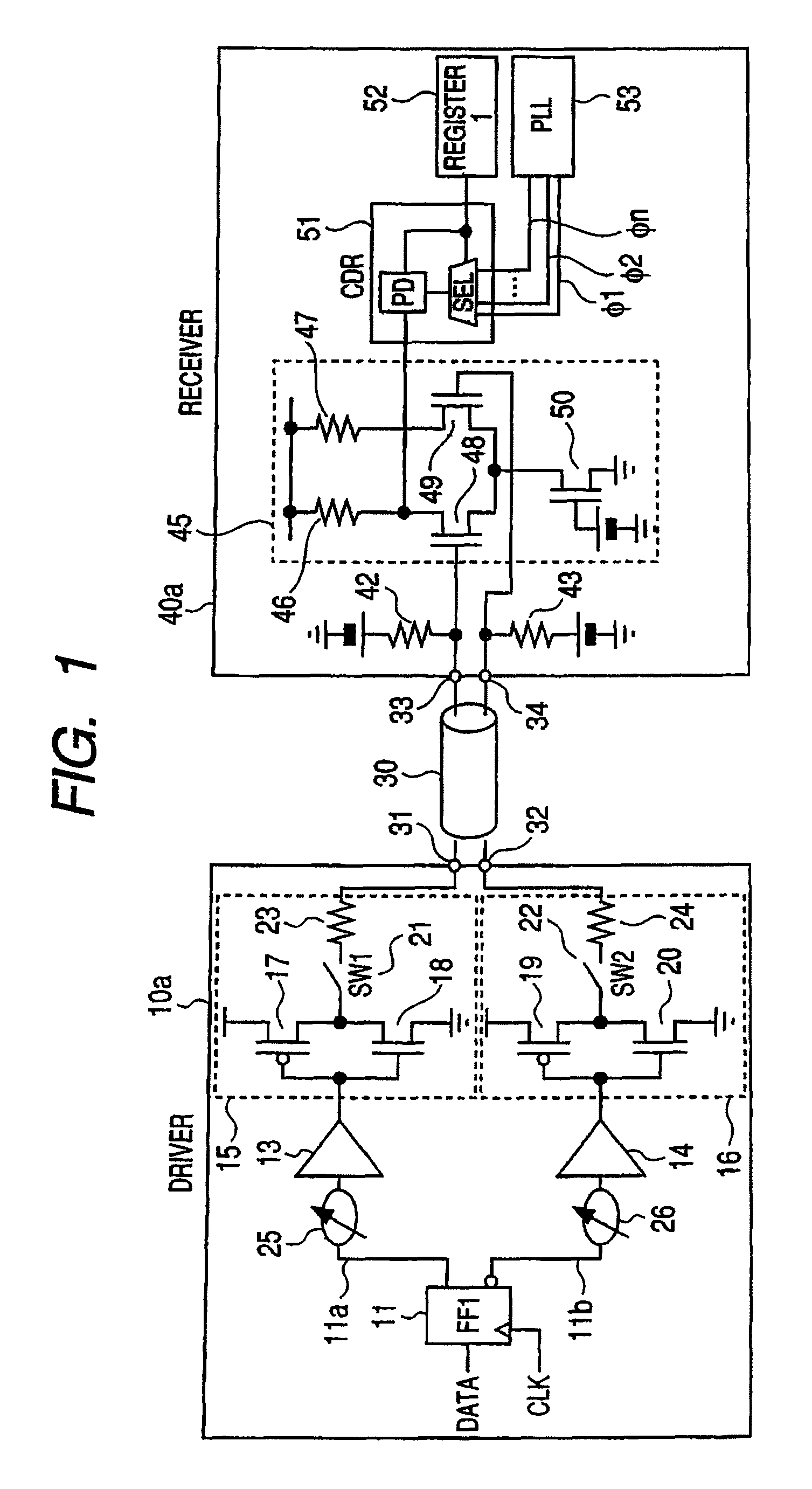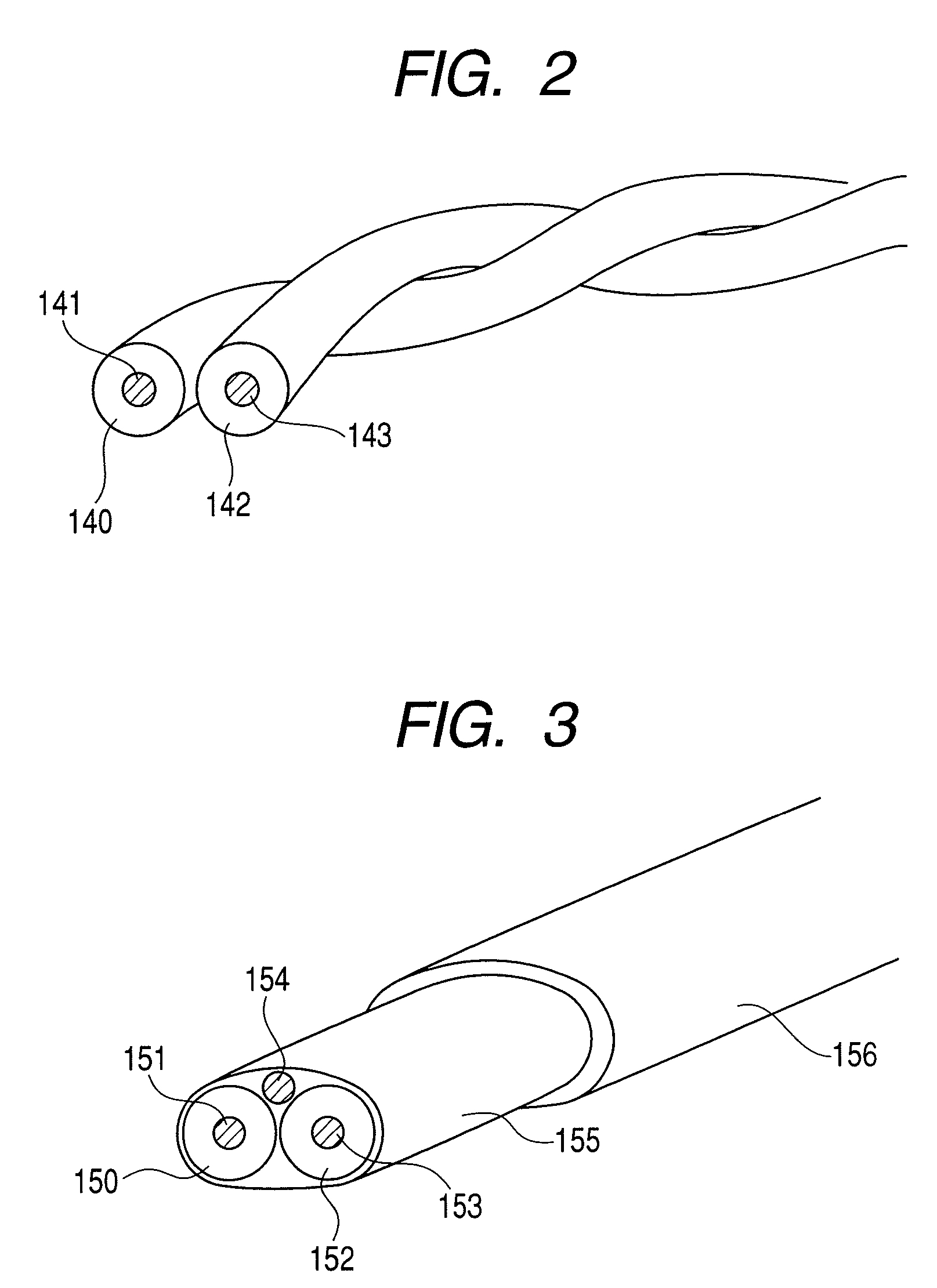Differential signaling system and method of controlling skew between signal lines thereof
a signaling system and signal line technology, applied in the field of differential signaling system and method of controlling skew between signal lines thereof, can solve the problems of differential noise, common mode noise which is added, and reduces the effectiveness of common mode noise rejection by differential amplifiers, so as to reduce the effectiveness of common mode noise rejection and degenerate the signal/noise ratio
- Summary
- Abstract
- Description
- Claims
- Application Information
AI Technical Summary
Benefits of technology
Problems solved by technology
Method used
Image
Examples
embodiment 1
[0035]FIG. 1 is a circuit diagram showing a differential signaling system according to a first embodiment of the present invention, which comprises a driver circuit and a receiver circuit and constitutes part of a connectorized cables an information processing apparatus or the like.
[0036]The driver circuit 10a according to the first embodiment comprises: an output buffer 15; an output buffer 16; a preamplifier 13 for driving the output buffer 15; a preamplifier 14 for driving the output buffer 16; variable delay circuits 25 and 26; and a flip flop (FF) circuit 11 to which DATA and a CLK are input and which has an output 11a and an output 11b that is obtained by inversing the output 11a. The output buffer 15 comprises: a PMOS transistor 17 and a NMOS transistor 18 which are connected in series between a dc voltage and the ground; and a switch 21 and a termination resistor 23 which are connected in series between the drain of the PMOS transistor 17 or the drain of the NMOS transistor ...
second embodiment
[0054]FIG. 7 is a circuit diagram showing a differential signaling system according to a second embodiment of the present invention, which comprises a driver circuit and a receiver circuit and constitutes part of a connectorized cable, an information processing apparatus or the like.
[0055]The driver circuit 10b of the second embodiment comprises: a differential output buffer 70; a differential output buffer 80; a preamplifier 13 for driving the output buffer 70; a preamplifier 14 for driving the output buffer 80; variable delay circuits 25 and 26; and a flip flop (FF) circuit 11 which receives an input DATA and an input CLK and provides an output 11a and an output 11b obtained by inversing the output 11a. The differential output buffer 70 comprises: NMOS transistors 73 and 74 whose sources are connected; resistors 71 and 72 which are respectively connected between the drains of the NMOS transistors 73 and 74 and a dc voltage; a NMOS transistor 75 which serves as a constant current s...
third embodiment
[0061]FIG. 8 is a circuit diagram showing a third differential signaling system embodiment of the present invention which comprises a driver circuit and a receiver circuit and constitutes part of a connectorized cable, an information processing apparatus or the like.
[0062]The driver circuit 10c comprises: an output buffer 15 comprising a PMOS transistor 17 and a NMOS transistor 18 which are connected in series and a termination resistor 23; an output buffer 16 comprising a PMOS transistor 19 and a NMOS transistor 20 which are connected in series and a termination resistor 24; a preamplifier 13 for driving the output buffer 15; a preamplifier 14 for driving the output buffer 16; variable delay circuits 25 and 26; and a flip flop (FF) circuit 11 to which DATA and a CLK are input and provides an output 11a and an output 11b obtained by inversing the output 11a. The output buffers 15 and 16 of the third embodiment may be constructed of differential output buffers such as those 70 and 80...
PUM
 Login to View More
Login to View More Abstract
Description
Claims
Application Information
 Login to View More
Login to View More - R&D
- Intellectual Property
- Life Sciences
- Materials
- Tech Scout
- Unparalleled Data Quality
- Higher Quality Content
- 60% Fewer Hallucinations
Browse by: Latest US Patents, China's latest patents, Technical Efficacy Thesaurus, Application Domain, Technology Topic, Popular Technical Reports.
© 2025 PatSnap. All rights reserved.Legal|Privacy policy|Modern Slavery Act Transparency Statement|Sitemap|About US| Contact US: help@patsnap.com



